Overhead Door Repair Guide
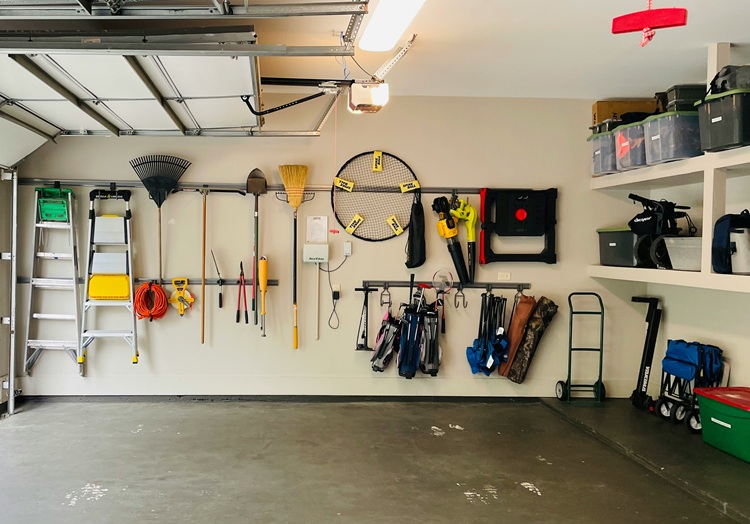
Today’s overhead doors are complex systems built for daily use and long-term reliability. Yet, it's easy to overlook them until something goes wrong. When your door doesn’t open as expected, the issue can often be traced to one of several critical components. In this article, we’ll break down those components, explain their functions, and highlight signs that may indicate the need for repairs.
Key Components of an Overhead Door System
Most overhead doors span several feet in width and weigh hundreds of pounds. Despite their size, they operate with surprising precision—thanks to multiple interconnected parts. Here's a breakdown of essential components and how to recognize when something might be off.
Hinges

Hinges allow the door panels to bend as the door opens and closes. Worn or broken hinges can cause the entire structure to function improperly and put added stress on other components.
Signs of Hinge Damage
- Creaking, squeaking, or groaning noises
- Rust or visible cracking
- Misaligned or sagging panels
Opener Motor
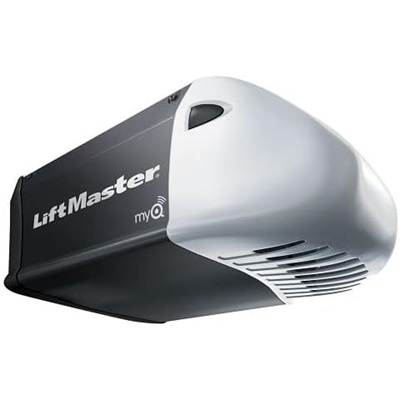
The motor triggers the initial movement of your overhead door. Once in motion, the springs take over. If the motor fails, the entire system becomes unreliable. Prompt repair can prevent you from being locked out or stuck inside.
Signs of Opener Damage
- Unusual grinding or humming sounds
- Unresponsive remote or keypad
- Partial or failed opening/closing
- Intermittent remote signal
Door Panels

The panels form the visible structure of your overhead door and are available in various materials, including wood, steel, aluminum, and fiberglass. Some may feature insulation or decorative glass. When panels sustain damage, functionality and curb appeal both suffer.
Signs of Panel Damage
- Warped or cracked wood
- Dented or rusted metal panels
- Impact damage or broken windows
Overhead Door Springs
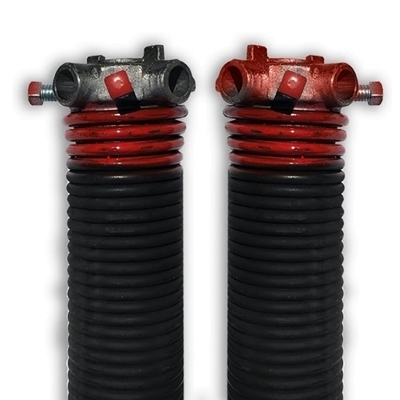
Overhead doors rely on either torsion or extension springs to counterbalance their weight. Torsion springs are mounted horizontally above the door, twisting under tension. Extension springs, on the other hand, stretch along the sides of the track to help lift and lower the door. When these fail, the entire system becomes unstable.
Signs of Spring Damage
- Slow or uneven opening
- Loose or sagging extension springs
- Crooked or lopsided door movement
Lock Bar

The lock bar adds an extra layer of security by sliding into the track when the door is shut. It helps prevent tampering or forced entry, especially after hours.
Signs of Lock Bar Damage
- Difficulty engaging the lock
- Loose or rusted components
- Door moves slightly even when locked
Rollers
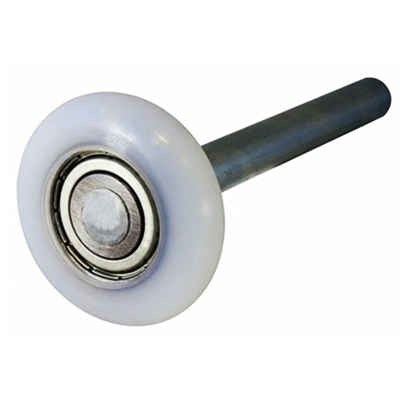
Rollers fit into the tracks and help guide the door up and down. High-quality steel or nylon rollers reduce friction and wear. Damaged rollers can make operation noisy and unstable.
Signs of Roller Damage
- Rattling, screeching, or grinding noises
- Door movement that’s rough or uneven
- Panels drooping when fully open
Safety Cables

Safety cables run through the overhead door springs and act as a safeguard in case a spring breaks. They’re essential for protecting both people and property from sudden spring failure.
Signs of Safety Cable Damage
- Cables appear frayed, rusted, or loose
- Door won’t stay in position or shakes during operation
- Loud snapping or popping sounds
Electric Eye (Safety Sensors)
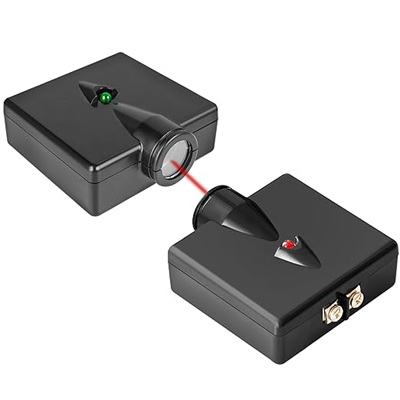
Located near the bottom of the door, the electric eye system prevents the door from closing when something blocks its path. These infrared sensors send a beam across the opening; if broken, the door reverses. Regular testing is critical to ensure they function properly.
Signs of Sensor Damage
- Door reverses without obstruction
- Flashing or unlit sensor indicators
- Door only closes when holding the wall button
Door Tracks
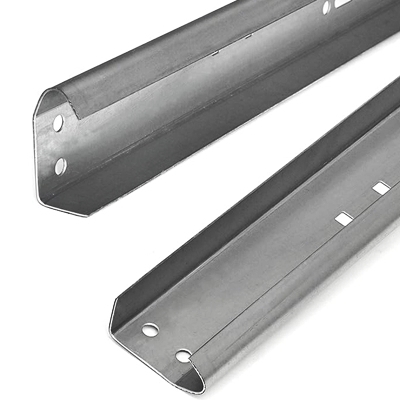
Tracks guide the upward and downward motion of the door. Though simple in design, they must be perfectly aligned and kept clear of obstructions to work correctly.
Signs of Track Damage
- Door stalls, sticks, or hesitates mid-movement
- Uneven or jerky motion
- Visible bending or warping of the tracks
Weatherseal
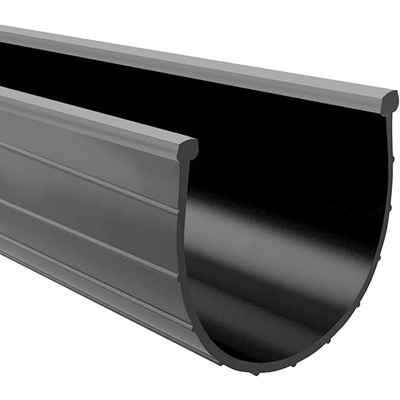
This strip of material at the bottom of your overhead door seals gaps and helps block out air, moisture, and pests. A worn weatherseal compromises energy efficiency and cleanliness.
Signs of Weatherseal Damage
- Drafts or water entering under the door
- Visible gaps or hanging seal
- Increased energy bills or pest activity
When any of these symptoms appear, it’s time to call in the pros. A Better Garage Door is proud to serve Broomfield and nearby areas with fast, expert service for all your overhead door needs.
Why Prompt Overhead Door Repairs Are Essential
It’s easy to put off fixing a minor issue with your overhead door—until that small issue turns into a major problem. Unlike your television or Wi-Fi router, a faulty overhead door poses serious safety, security, and financial risks. Addressing needed repairs right away helps protect your home, lower costs, and avoid accidents.
Here are several reasons why timely overhead door repairs should always be a priority:
"Smaller problems are just the precursors to larger issues and those bigger problems come with much bigger repair bills or even replacement costs. Keeping up with garage door repairs can save you a lot of money and headaches in the long run."
SOURCE: Creative Door Manufacturing
- Enhanced Security — A malfunctioning door that doesn’t close completely—or worse, remains stuck open—invites intruders. Since the overhead door is the largest opening in your home, it must stay secure to protect your belongings and family.
- Prevent Structural Damage — Issues like worn springs or damaged tracks can cause the door to slam shut unexpectedly or become unbalanced. Left unchecked, these problems could result in the door crashing down and damaging the frame—or worse, injuring someone nearby.
- Energy Efficiency — If your door isn’t sealing properly, cold air will pour into your garage and seep into adjacent rooms. That forces your heating system to work harder and drives up your energy bills.
- Lower Overall Repair Costs — Ignoring a damaged roller or misaligned track can lead to further strain on the motor or door structure. Early intervention typically means smaller repair bills and longer equipment life.
- Injury Prevention — Safety systems like the electric eye are designed to protect people and pets. If they’re malfunctioning, the door may not stop or reverse when something is in its path—posing serious risks to anyone nearby.
- Wildlife Prevention — A door that doesn’t shut tightly can serve as an open invitation to raccoons, mice, and other animals seeking shelter. Removing unwanted pests later can be a costly and frustrating ordeal.
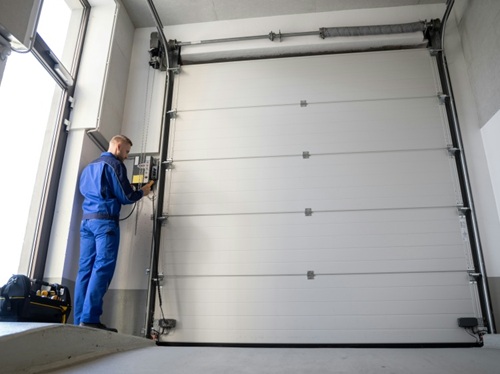
Overhead Door Repair FAQs
Unusual sounds, uneven movement, delayed response, and visible wear are all common signs. If your overhead door is behaving abnormally, a professional inspection is a smart next step.
Start by checking for blocked tracks or a disconnected opener. If that doesn’t resolve the issue, call a technician to diagnose the problem safely.
Minor fixes like cleaning the sensors or replacing batteries are fine for homeowners. For mechanical issues or anything involving springs or cables, hire a professional for safety and lasting results.
Try replacing the batteries and checking your range. If it still fails, reprogramming or a full opener inspection may be needed. Our experts can help either way.
Sounds like grinding, squealing, or clunking often point to worn components or the need for lubrication. Schedule a service call to prevent further damage.
The Dangers of DIY Overhead Door Repairs
Need Overhead Door Repairs?
Visit the page below to learn more about the overhead door repair services we offer – or call our team for a free estimate!While it may be tempting to fix your overhead door on your own, doing so can be dangerous—and expensive. Attempting to repair components like springs or cables without the right tools or experience can result in serious injury.
Even if the repair seems minor, accessing the necessary parts may be difficult or impossible for non-professionals. Worse, DIY work can void your manufacturer warranty, leaving you fully responsible for any future issues. When in doubt, call a trained technician who can safely and efficiently handle the job.
If the overhead door on your property isn’t working as it should, don’t wait. Contact A Better Garage Door and let our experts address the issue before it escalates.